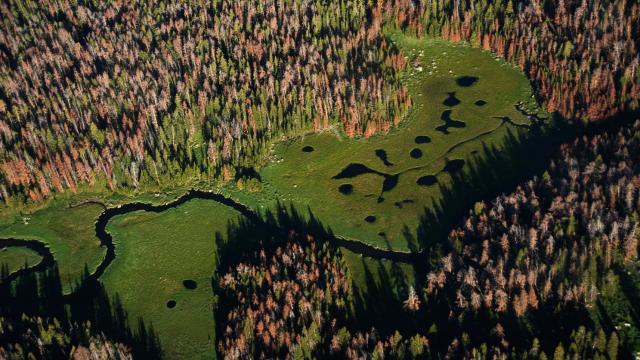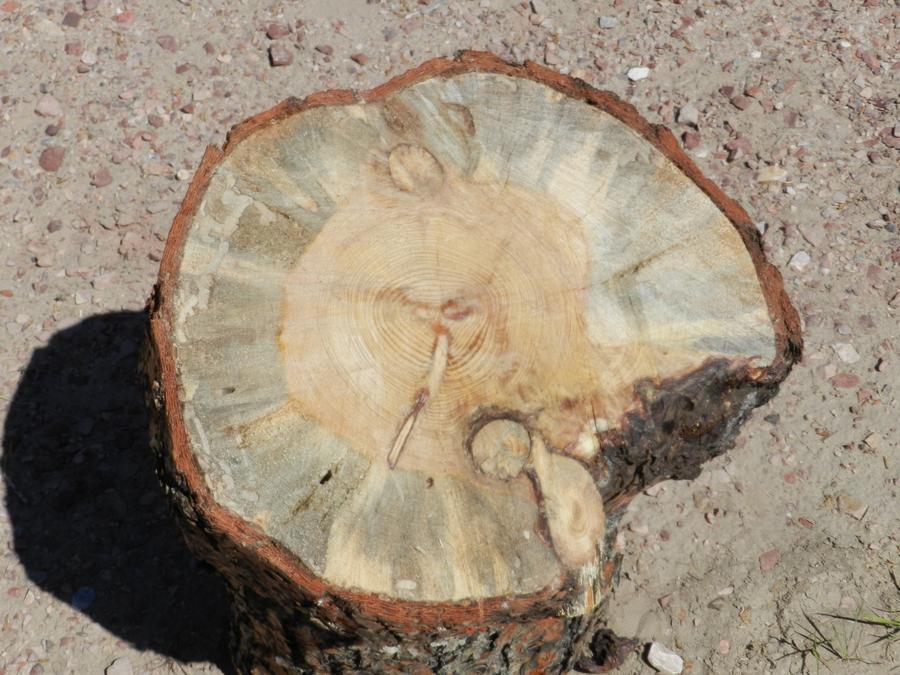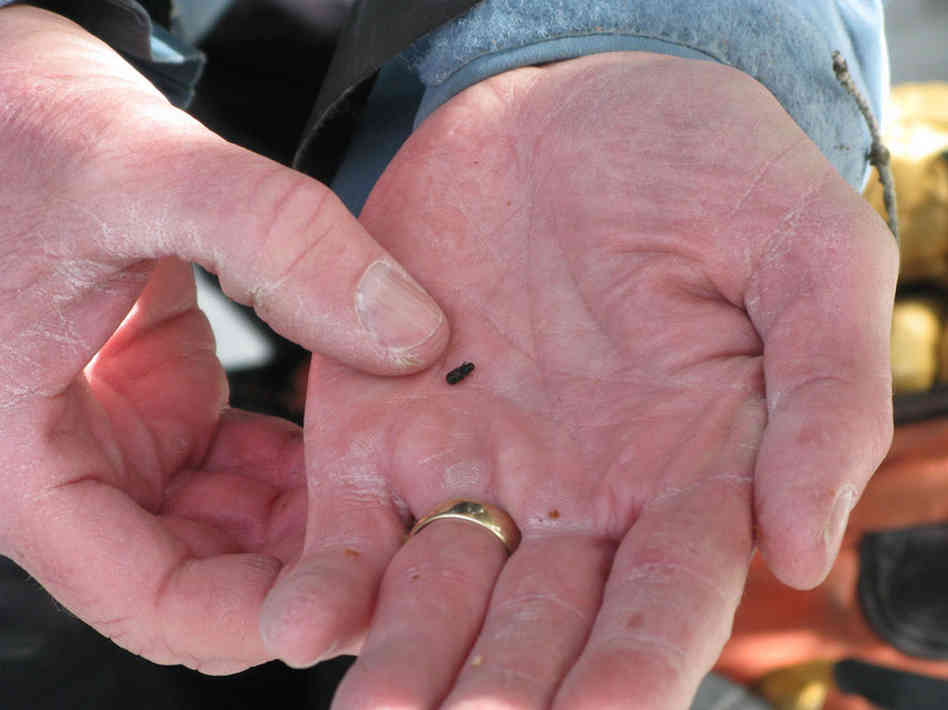
I spent last summer working for my aunt Barb on her ranch in Campbell County, Wyoming, thinning the overcrowded pines which have grown there since the land was cleared by loggers sometime last century. Trees can’t thrive in such close quarters, and tightly packed stands of timber represent a major wildfire hazard. The area’s seen some bad fires over the last few years. Just down the county road you can see the remnant of an enormous conflagration that claimed a long swath of woodland along a ridgeline. Folks living there talk about fires as if they are living predators that move with purpose and intent towards homes. In our neck of the woods things aren’t desperate yet, but everyone knows that something new is happening.
It’s more than just wildfires, too. A plague is spreading through the pine forests of the Black Hills, just across the South Dakota border. Drive the state highways around Spearfish and you’ll see the evidence of its passing: great, solemn expanses of dead pine, stark in brown and grey against the healthy woodlands surrounding them. For many people living here it’s just too stunning a problem to talk about. Outside the little museum in the Mount Rushmore visitor’s center there’s a small display featuring panoramic vistas of trees, dead by the tens of thousands, and the title “Our Forests are Dying.” They are. No one knows quite what to do about it.
The culprit is the mountain pine beetle, a species which has existed in the forests of the American West since long before the first human settlers arrived there. The relationship between pine beetles and the woodlands they occupy has historically been one of elegant symbiosis. The beetles deposit their larvae beneath the bark of a tree to feed on its nutrient-rich sapwood.
In the ecologically normal state of affairs, trees which are too old or sickly to repel their invaders are strangled by the feeding larvae and the distinctive blue fungus carried by adult beetles, leaving room for new trees to grow. This is an essential function. Healthy forests need diversity in the age classes of the trees which inhabit them. Fires and beetles are phenomena which help ensure that this diversity is maintained, but in recent years they have demolished regional woodlands at alarming levels.
This problem is not just a local one. Since the mid 1990s, conifer forests across British Columbia and the Western U.S. have been devoured on a scale unprecedented in recorded history. By May of 2013, approximately 88 million acres had been decimated by beetle infestation. The U.S. Forestry Service reports that over the last few years, annual averages across the Western U.S. for tree mortality due to wildland fire has remained roughly on-par with tree mortality due to pine beetle infestation, which is especially distressing when you consider that recent years have seen some of the largest wildfires on record.
That both of these phenomena have been unusually destructive in recent years is no coincidence. Both are symptoms of a changing climate.
The connection between higher annual temperatures and increased wildfire activity is well known among inhabitants of Campbell County, although it’s rare to see anyone acknowledge that this might be a result of climate change. Skepticism is common, for a whole host of reasons. For one, coal has been good to the county. When you and the community in which you live depend on fossil fuels for economic stability, it’s easier to see the desperate pleas of environmentalists to abandon those fuels as liberal foolishness or even as malicious attack.
The connection of the ongoing beetle infestations to climate change is even less well-known, perhaps because it’s not as obvious. I myself didn’t understand that connection until I spoke with an old professor of mine, an environmental activist and retired ecologist named Alan Journet. The spike in beetle activity over recent decades is due to something he calls a climate change “double whammy”: a pair of independent ecological responses to increased temperature which compound one another to enhance the ability of pine beetles to kill timber.
First of all, hotter summers and shorter winters are good for beetles. Like many insects, they’re ectotherms; they rely on heat from their environment to fuel their physiological processes. The higher the temperature, the better the beetles are able to reproduce, and so hotter temperatures result in bigger beetle populations. Historically, such unusually large crops of beetles are eventually killed off by a long, cold winter, but these are becoming more rare as climate change progresses.
That’s the first problem. The second regards how the trees themselves respond to increased temperatures. During an especially hot summer, trees release more amino acids into their tissues, and these amino acids are precisely the nutrients which pine beetles are after when they invade a tree.
All of this contributes to a frightening feedback loop. Hotter annual temperatures mean more beetles and more beetles means higher tree fatalities. Since healthy forests collect carbon from the atmosphere, higher tree fatalities means more carbon, and more carbon means increased annual temperatures. This is beyond scary, and it’s going to get worse. Journet told me in a recent correspondence, “Everything I have read projects that bark beetle damage will certainly become worse as warming and drought continue.”
So what’s to be done? The answer to this question is, at best, unclear. Forestry agencies are embroiled in an ongoing battle to protect healthy woodlands from incursion by pine beetles. Thinning of crowded pine stands has proven somewhat effective. Proposals to spray pines with chemical agents formulated to resist beetle invasions are being explored. But it’s unclear how much impact these approaches can have on the larger problem. For one thing, forestry agency resources are stretched too thin. Wildfires and beetle infestations are simultaneously affecting huge stretches of Western woodlands, and the methods which have proven effective in combating these problems are time-consuming and expensive.
There’s a grander problem as well. Pine beetles, like wildfires, are important, natural phenomena. In a sense, they have to happen. As long as there are healthy pine forests, there will be populations of pine beetles. As long as temperatures keep rising, those populations are going to continue to grow. For the moment, foresters are doing what they can, thinning forests and culling infected trees. They are urging local landowners to do the same.
It is a sad truth that these landowners, living in a region which has benefited so much from human dependence on fossil fuel, will be among the first to suffer the ravages of a changing climate. The choice before them is between giving up their economic future, or allowing the country which they love so well to die before their eyes.
I talked to one of my aunt’s neighbors during a recent visit, a man of character and a good steward of his land, who in the past year has seen on his property a destructive beetle infestation and a fire which necessitated a frantic, three day containment effort. In relating a recent conversation with a green contractor whose prices were, to his mind, exorbitant, he told me, “The only green I care about is the kind in my pocket.”
This with an air of defiance and, like I’ve seen or imagined in many such conversations, a hint of something like despair. I hope he changes his mind while there’s still room for doubt.
In one of the tangled stands of timber we thinned over the summer, I found a tree I liked. A tree with character. It had grown out of the hillside in such a way as to resemble a kind of seat. As we often do with features of note on the property, we named this tree for one of our dearly departed: in this case, for my late aunt Lynn Dickey who was a founding member and the first director of the Powder River Basin Resource Council. She would have liked that place and that tree.
A month ago my aunt Barb wrote me an email to tell me that the tree had been lost in a storm, cracking under the weight of so much snow. When she cut it up she found it ridden with beetles and their attendant blue fungus. This was not the result of a runaway infestation, but I’m nevertheless filled with dread. What killed that tree is a presence that has always been in the quiet woods of that place, but it is changing, and I’m afraid to imagine what it will look like when I’m old. For now, we do the best that we can. We thin the trees and wait.
3 WAYS TO SHOW YOUR SUPPORT
- Log in to post comments
















